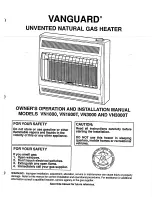
EN
5
infrared heating panel TIH 350+ / TIH 650+
Information about the device
Device description
The device serves for drying selective water damages on walls.
For damages located above floor level up to two further devices
may be mounted on top of the first panel using the set of
stacking handles TIH 350+/650+ from the available
accessories.
To irradiate higher wall surfaces, you can use the set of
assembly support fastening clamps and the assembly supports
connection set 350+ or 650+ from the available accessories as
well as suitable assembly supports.
The device is fitted with a MID-certified energy consumption
meter and thus qualified for billing purposes. The meter
indicates the energy consumed so far. It cannot be reset. An
LED indicates that the panel is switched on and the energy
meter captures the energy consumption.
In accordance with calibration regulations, restoration
companies are so-called "meter users" or "users of
measurement readings", which binds them to observe the
German Weights and Measures Act (MessEG). The MessEG
regulates the recording and transfer of measurement readings
based on which the power consumption costs of the devices
shall be determined.
Radiation
The wavelength of the thermal radiation produced by the
devices
TIH 350+
/
TIH 650+
lies within the IR-C range. The
wavelength depends on the respective surface temperature of
the heating panel and thus on the ambient temperature in the
room where the heating panel is set up. At 75 °C = 8.3 μm, at
85 °C = 8.1 μm, at 95 °C = 7.9 μm (according to Wien's
displacement law). Thanks to such mild IR-C radiation, there is
no risk of eye damage.
What is infrared radiation?
Infrared radiation is a natural type of radiation and for instance
part of solar radiation. It is heat radiation, regardless of how this
heat is generated. Every object whose temperature lies above
the absolute zero (-273 °C) emits energy in the form of
electromagnetic radiation.
The wavelength of the infrared radiation is determined by the
temperature of the radiating object. If infrared rays hit the
surfaces of other objects, the stored energy is released in the
form of heat. The heat transfer takes place through conductivity,
convection or radiation. In any case, the decisive factor is the
temperature difference.
































